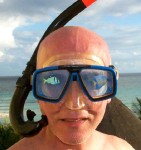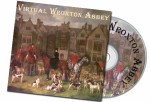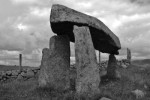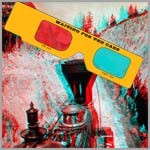This project celebrates the 19th-century equivalent of the IMAX by presenting a virtual-reality version of the Battle of Gettysburg Cyclorama. It also explores the role of the cyclorama in the development of immersive media, as well as the societal impact of the 1883 painting on post-Reconstruction America. In the section “Creating the Cyclorama,” there is a three-node VR panorama that presents the painting in the context of landscape panoramas photographed in 1882 and 2012. Other sections include: “The Battle of Gettysburg,” “The Cyclorama and Immersive Media, “Reaction to the Cyclorama,” and “Memory and Memorials.” Finally, there is an “Epilogue” section that features a look at the Battle of Gettysburg reunions in 1913 and 1938. https://battleofgettysburgcyclorama.com
- Jump to secondary navigation
- Jump to primary navigation
- Jump to main content
- Jump to secondary navigation
- Jump to footer
Archives:
Drones and the VR Experience
The desire to present a simulation of genuine experience—verisimilitude—is at the heart of of the visual arts. During its nearly 200-year history photography has evolved ever closer to a simulacrum of human vision. From early efforts to create 3D experience, to the most recent head-mounted display (HMD) video virtual reality imaging, the desire to extend the illusion of reality within a mediated visual experience continues. With the availability, beginning in 2017, of drone-based VR cameras, the limits of the virtual reality experience were no longer bound to the earth. This website explores fifteen different use cases for drone-augmented virtual reality. https://dronevr.allaroundnevada.com/
Early Photography Portfolios
I’ve been working seriously in photograph since I was around 14, beginning with my high school yearbook, and going on to be the photo editor of my college daily, and then into a real-life career in photography and photography education.. These portfolios begin with my work documenting the protests of the 1960s, and continue through my year overseas (1968), and then to my experiences in Puerto Rico, Illinois, fatherhood, Haiti, old theatres, and other twists and turns of my camera’s direction,. https://howardgoldbaum.com/portfolios/
TravelBlogs

This was my initial personal laboratory for experimental rich-media narrative forms. Includes: Fear and Loafing on the Mayan Riviera (finalist, SXSW competition, 2003), A Journey in Geological Time, Memory and Memorials; and The Best Pizza in the World.
All Around Nevada

My project celebrating the beauty and history of the Silver State, “All Around Nevada,” won a Best in Competition award from the Broadcast Education Association in 2010. It currently features 147 different locations, all explored in virtual reality panoramas.
Virtual Wroxton Abbey

The Virtual Wroxton Abbey was published as a CD-ROM by Fairleigh Dickinson University’s Wroxton College in 2004. This virtual-reality exploration of a historically significant 17th-century home and estate in England won the Best of Festival Award from the Broadcast Education Association in 2005. At the time of its publication the project was among the most extensive such explorations ever created, with more than 80 interconnected virtual reality environments, plus hundreds of other images, audio, and video elements.
Voices from the Dawn

Voices from the Dawn is my continuing research project, begun in 1978, and requiring a dozen summer fieldwork sessions in Ireland. The project explores the ancient monuments of Ireland in the context of their folklore and mythology. All media work is now completed, and when all the research and writing is finished the site will feature more than 100 different prehistoric monuments. The project won the “Award of Excellence” from the Broadcast Education Association in 2014, and was a featured presentation at the 2012 Museums and the Web conference.
Waiting for the Cars

Waiting for the Cars is a book of historical stereographs in 3-D anaglyph conversion from Alfred A. Hart’s stereographs documenting the 1863-1869 construction of the Central Pacific Railway from Sacrament, California to Promontory Summit, Utah. The book was co-authored with Nevada State Railroad Museum historian Wendell Huffman, published by NSRM in October, 2012. The 218 photographs are presented as the photographer intended them to be seen—in three dimensional depth. Included with the book are the 3D glasses that make the images accessible.